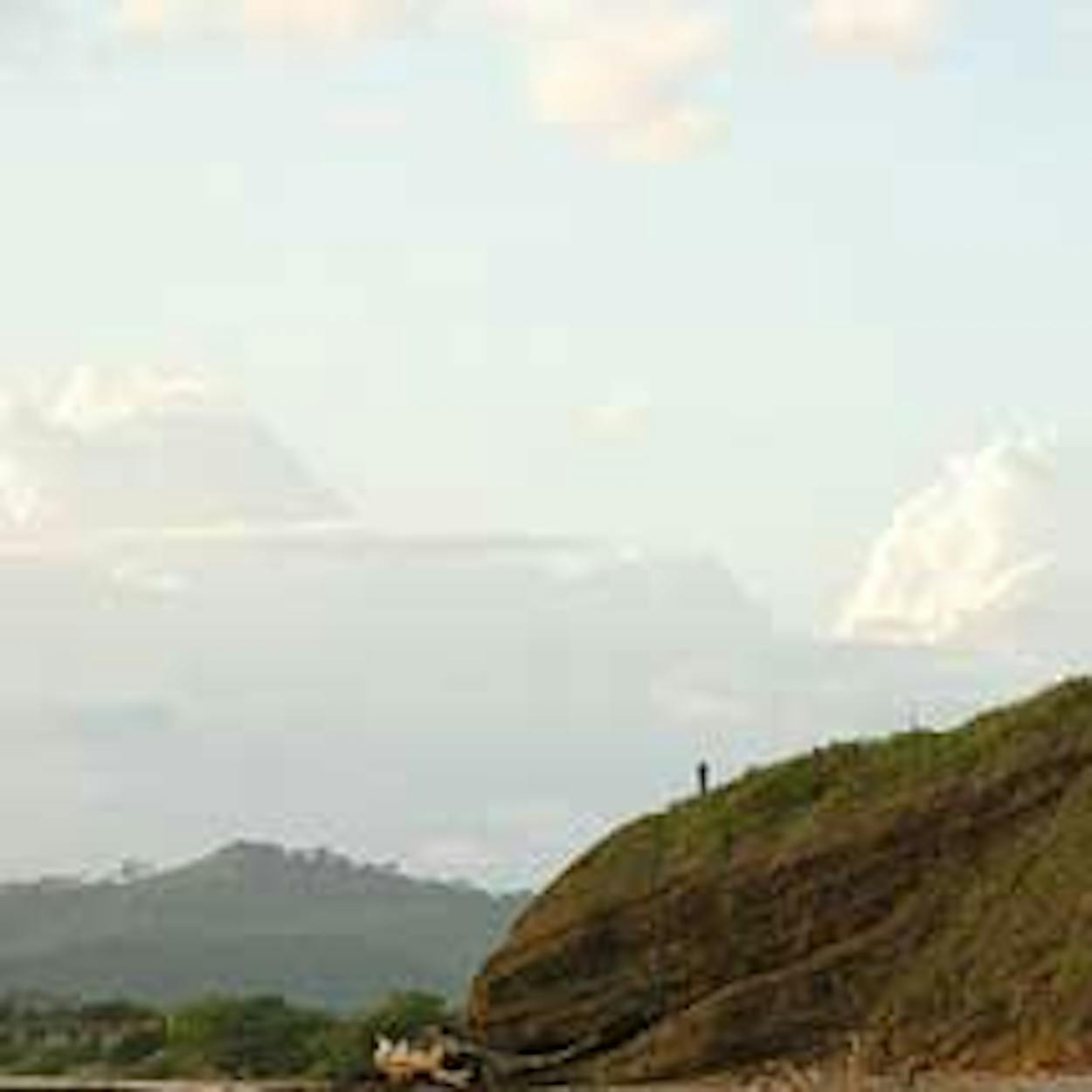When I left Austin a few weeks ago for Costa Rica, a surf trip to neighboring Nicaragua wasn’t in my plans. “Jungles and volcanoes,” I told my sister before I left, “and see a few birds.” But when a buddy sent me an e-mail two weeks into my trip about surfing I was intrigued. He wrote, “Go surf the legendary surf break at Popoyo.” I was hooked at “legendary” and left the highland Costa Rican town of La Fortuna on a bus the very next day.
From La Fortuna down the mountains to northwestern Costa Rican province of Guanacaste the flora is a uniform, high jungle canopy, interspersed with small farms of guayavas and papayas, carrots, onions, and peppers. As I enter the flatlands, however, the cool highland breezes morph into humidity and stifling heat.
The Costa Rican side of the border is well organized, minimally bureaucratic and efficient—as borders go, that is. But the Nicaraguan side is little more than a tropical mosh pit full of people wandering with little sign of purpose, hawkers and border officials stamping everything in triplicate, for a price. I hand my passport to the border official. He thumbs through the pages, arching his eyebrows at the mass of visas it contains. He thumbs it over again, looking for a place to leave his ink.
“Uzbekistan?” he asks, pointing at the visa.
I shrug my shoulders and smile.
After a third review he finds an empty space between an Omani and Iranian visa, slams down the stamp, and sends me on my way. I manage to find a real bank—it is my experience that black market money changers rob one blind—and exchange my Costa Rican colones for Nicaraguan cordobas. I then stroll through “Customs,” which is little more than four timbers topped by a corrugated iron roof into a classic Central American scene.
Dilapidated small sheds sell unnamable foods at unspeakably expensive prices, better to gouge the few tourists around. A cacophonous medley of Latin hip-hop blares away from three different boom boxes. If you’ve ever wondered where dead American school buses go, wonder no more—they are all in Nicaragua and have been retrofit with gaudy patterns and insane colors. It could have been East Austin or the great West Side barrio of San Antonio in the fifties.
The ride from the border to Rivas, the local hub, bumps and grinds along the Lago De Nicaragua. Two extinct volcanoes hunch in the waters offshore, forming the Isla de Ometepe. For one five-mile stretch of road the windswept fields are filled with thousands of swallows careening and caroming about in an amazing aerial symphony. The trees bend to one side in the persistent southerly winds where a $71 million wind farm churns out much needed energy for a resource-poor nation.
The road north goes on. I’m dropped off at the Rivas bus station, a ramshackle, ad hoc congregation of cinder-block buildings, food sheds, and vegetable stands. It’s poor here but everyone is well fed. I linger for a while. A little girl sells me a fresh bag of fried pork rinds. I chase them down with Orange Fanta, hop aboard the last bus to Salinas, and pay my fare: $1.
“Why is it,” I think to myself, “that those who live closer to the edge of life smile more? And those of us who have so much more to be grateful for have faces flawed with frown lines? Is it that those with less are more likely to be grateful for what they have while those of us who have everything are consumed with worry about what we could lose?”
Forty-five minutes later, along a bumpy dirt road deposited between windblown hills, small farmsteads filled with pigs, chickens, and vegetable gardens, I see children playing baseball. Unlike Costa Rica where there is a soccer field in every village, here it’s a baseball diamond. “En Nicaragua,” I am told, “beisbol es rey!” How can one not like a country where baseball is king?
The bus continues its twisting journey. Night begins to fall. I’m filthy, hungry and tired. I’m growing worried that Popoyo might be too far out when the bus driver yells at me, points left across a bridge and down an empty dirt road. “Popoyo is two kilometers that way.”
Five kilometers later it’s dark and I’m dodging a halo of mud puddles in the moonlight. The only sign of human life is a hacienda up the hill, a generator echoing like so many gunshots in the hot tropical night. A cow lows in the distance. And a black shade approaches.
“Buenas noches,” he says.
“Buenas,” I reply, too tired and pissed off to ask for directions.
Five more kilometers and a car stops.
“Where you go?” comes an Italian accent from the window.
“Popoyo,” I answer.
“Big surf there, I came ten years ago and never left,” he says. “Get in.”
His slick-backed gray hair is faintly discernible in the night. He speaks with a slight beer slur as we chit-chat. I’m quiet and unengaged in the conversation as we bounce ten kilometers more down the road.
He drops me at a decrepit hotel less than a hundred yards from the beach. The owner shows me my room and I quickly doze off.
I awake at six in the morning to shrieking music blasting through my window and stumble out of bed. I’m bleary-eyed and coated in sweat. I fumble around in a pack of cigarettes but look up when I hear the crash of a wave. I stop in my tracks, turn around, and grab my surfboard.
“Surf’s up,” I shout to myself.
For the waves were, indeed, legendary.
To be continued . . .
Sean Paul Kelley is a travel writer based in Austin, Texas, and currently completing his first book. He writes about travel, life, culture, and architecture at seanpaulkelley.com.







